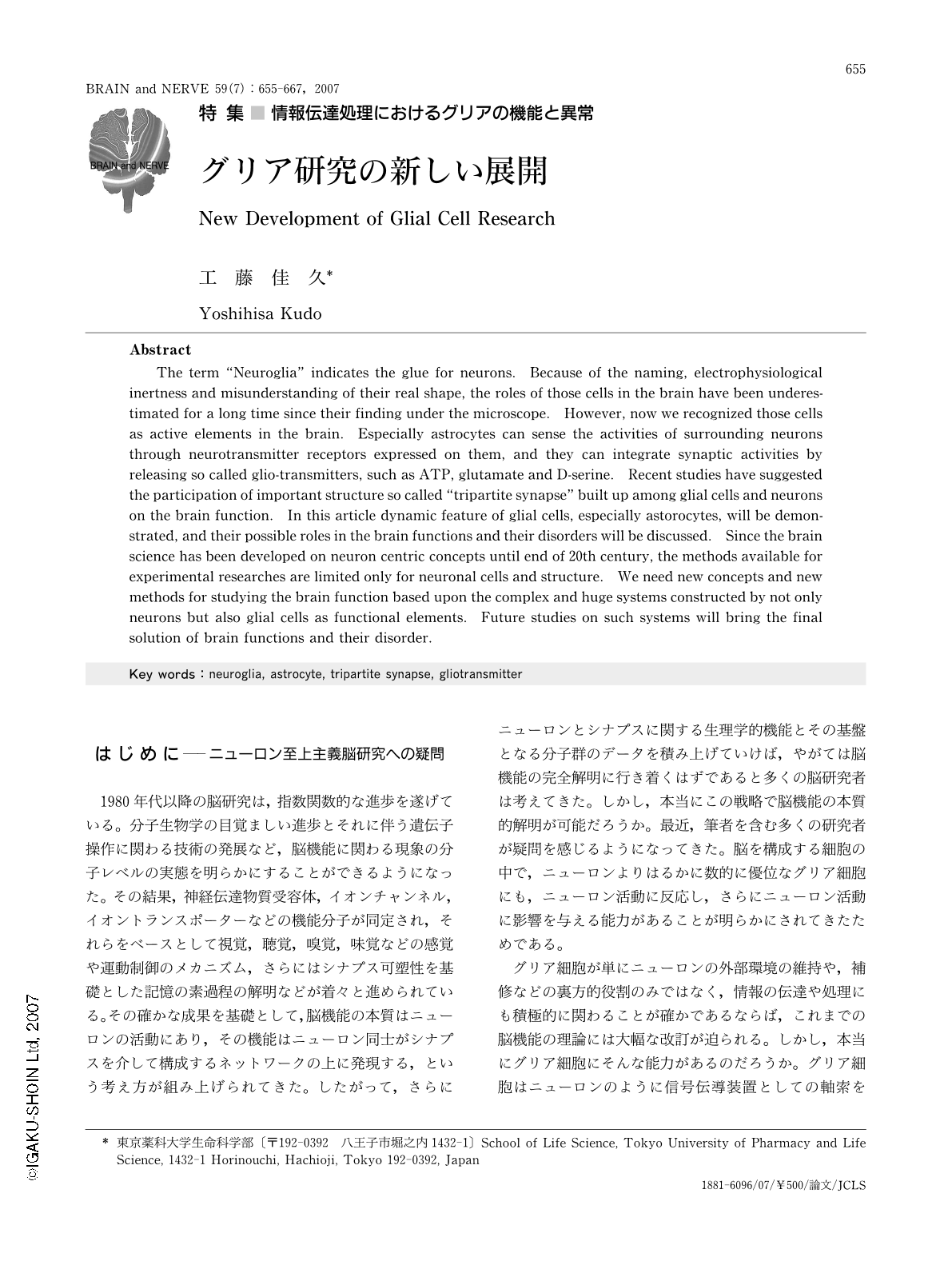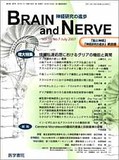Japanese
English
- 有料閲覧
- Abstract 文献概要
- 1ページ目 Look Inside
- 参考文献 Reference
はじめに―ニューロン至上主義脳研究への疑問
1980年代以降の脳研究は,指数関数的な進歩を遂げている。分子生物学の目覚ましい進歩とそれに伴う遺伝子操作に関わる技術の発展など,脳機能に関わる現象の分子レベルの実態を明らかにすることができるようになった。その結果,神経伝達物質受容体,イオンチャンネル,イオントランスポーターなどの機能分子が同定され,それらをベースとして視覚,聴覚,嗅覚,味覚などの感覚や運動制御のメカニズム,さらにはシナプス可塑性を基礎とした記憶の素過程の解明などが着々と進められている。その確かな成果を基礎として,脳機能の本質はニューロンの活動にあり,その機能はニューロン同士がシナプスを介して構成するネットワークの上に発現する,という考え方が組み上げられてきた。したがって,さらにニューロンとシナプスに関する生理学的機能とその基盤となる分子群のデータを積み上げていけば,やがては脳機能の完全解明に行き着くはずであると多くの脳研究者は考えてきた。しかし,本当にこの戦略で脳機能の本質的解明が可能だろうか。最近,筆者を含む多くの研究者が疑問を感じるようになってきた。脳を構成する細胞の中で,ニューロンよりはるかに数的に優位なグリア細胞にも,ニューロン活動に反応し,さらにニューロン活動に影響を与える能力があることが明らかにされてきたためである。
グリア細胞が単にニューロンの外部環境の維持や,補修などの裏方的役割のみではなく,情報の伝達や処理にも積極的に関わることが確かであるならば,これまでの脳機能の理論には大幅な改訂が迫られる。しかし,本当にグリア細胞にそんな能力があるのだろうか。グリア細胞はニューロンのように信号伝導装置としての軸索を持っておらず,また活動電位を発生することもない。これまでに認識されてきたグリア細胞の形態と機能から考えれば,グリア細胞が情報伝達や処理に関わる可能性はほとんどないように思われるのは当然かもしれない。しかし,これまでに蓄積されているグリア細胞に関する情報にはいくつもの大きな誤解があり,それらが,グリア細胞を不活発であり,積極的には情報伝達や処理には関与しない細胞と考える原因になっている。グリア細胞研究の新しい展開の1つは,この形態の誤解を解くことであったと筆者は考えている。
Abstract
The term “Neuroglia” indicates the glue for neurons. Because of the naming, electrophysiological inertness and misunderstanding of their real shape, the roles of those cells in the brain have been underestimated for a long time since their finding under the microscope. However, now we recognized those cells as active elements in the brain. Especially astrocytes can sense the activities of surrounding neurons through neurotransmitter receptors expressed on them, and they can integrate synaptic activities by releasing so called glio-transmitters, such as ATP, glutamate and D-serine. Recent studies have suggested the participation of important structure so called "tripartite synapse" built up among glial cells and neurons on the brain function. In this article dynamic feature of glial cells, especially astorocytes, will be demonstrated, and their possible roles in the brain functions and their disorders will be discussed. Since the brain science has been developed on neuron centric concepts until end of 20th century, the methods available for experimental researches are limited only for neuronal cells and structure. We need new concepts and new methods for studying the brain function based upon the complex and huge systems constructed by not only neurons but also glial cells as functional elements. Future studies on such systems will bring the final solution of brain functions and their disorder.

Copyright © 2007, Igaku-Shoin Ltd. All rights reserved.


